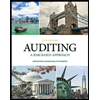
Concept explainers
(a)
Rules of Debit and Credit
Following rules are followed for debiting and crediting different accounts while they occur in business transactions:
Debit, all increase in assets, expenses and dividends, all decrease in liabilities, revenues and
Credit, all increase in liabilities, revenues, and stockholders’ equities, all decrease in assets, expenses.
To determine: whethereach of the following account would have debit entries only, credit entries only and/or both debit and credit entries.
(b)
To determine: whethereach of the following account would have debit entries only, credit entries only and/or both debit and credit entries.
(c)
To determine: whethereach of the following account would have debit entries only, credit entries only and/or both debit and credit entries.
(d)
To determine: whethereach of the following account would have debit entries only, credit entries only and/or both debit and credit entries.
(e)
To determine: whethereach of the following account would have debit entries only, credit entries only and/or both debit and credit entries.
(f)
To determine: whethereach of the following account would have debit entries only, credit entries only and/or both debit and credit entries.
Want to see the full answer?
Check out a sample textbook solution
Chapter 3 Solutions
FINANCIAL ACCOUNTING: TOOLS LL W/ ACCES
- On November 10 of year 1, Javier purchased a building, including the land it was on, to assemble his new equipment. The total cost of the purchase was $1,200,000; $300,000 was allocated to the basis of the land, and the remaining $900,000 was allocated to the basis of the building. (Use MACRS Table 1, Table 2, Table 3, Table 4 and Table 5.) Note: Do not round intermediate calculations. Round your answers to the nearest whole dollar amount. Problem 10-51 Part e (Static) e. What would be the depreciation for 2024, 2025, and 2026 if the property were nonresidential property purchased and placed in service November 10, 2007 (assume the same original basis)?arrow_forwardI am looking for the correct answer to this general accounting question with appropriate explanations.arrow_forwardCan you explain the process for solving this general accounting question accurately?arrow_forward
 Auditing: A Risk Based-Approach (MindTap Course L...AccountingISBN:9781337619455Author:Karla M Johnstone, Audrey A. Gramling, Larry E. RittenbergPublisher:Cengage Learning
Auditing: A Risk Based-Approach (MindTap Course L...AccountingISBN:9781337619455Author:Karla M Johnstone, Audrey A. Gramling, Larry E. RittenbergPublisher:Cengage Learning College Accounting (Book Only): A Career ApproachAccountingISBN:9781337280570Author:Scott, Cathy J.Publisher:South-Western College PubPrinciples of Accounting Volume 1AccountingISBN:9781947172685Author:OpenStaxPublisher:OpenStax College
College Accounting (Book Only): A Career ApproachAccountingISBN:9781337280570Author:Scott, Cathy J.Publisher:South-Western College PubPrinciples of Accounting Volume 1AccountingISBN:9781947172685Author:OpenStaxPublisher:OpenStax College- Century 21 Accounting Multicolumn JournalAccountingISBN:9781337679503Author:GilbertsonPublisher:Cengage
 Financial AccountingAccountingISBN:9781337272124Author:Carl Warren, James M. Reeve, Jonathan DuchacPublisher:Cengage Learning
Financial AccountingAccountingISBN:9781337272124Author:Carl Warren, James M. Reeve, Jonathan DuchacPublisher:Cengage Learning





